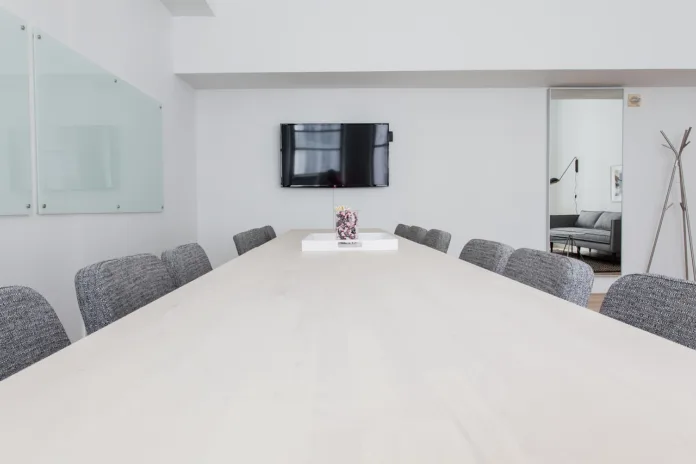Office furniture is a significant investment for any business and plays a crucial role in creating a comfortable and productive work environment. To maximize the return on your investment and ensure the longevity of your office furniture, it’s essential to establish a regular maintenance routine. In this article, we’ll explore tips and best practices for maintaining your office furniture, whether working in a corporate setting or having a home office.
1. Regular Cleaning:
Regular cleaning is one of the most basic yet vital aspects of office furniture maintenance. Dust, dirt, and spills can accumulate over time, leading to premature wear and tear. Use appropriate cleaning products and techniques depending on the material of your furniture. A damp cloth followed by a dry, lint-free cloth works well for wood furniture. For upholstery, vacuuming and spot cleaning can keep the fabric looking fresh.
2. Preventive Measures:
Prevention is often more effective than repair. Encourage employees to use beverage coasters and desk pads for writing to protect surfaces from spills and scratches. Use furniture glides or felt pads on chair legs and other pieces to prevent floor damage. Additionally, establish clear guidelines for food and drink in the office to minimize the risk of spills.
3. Regular Inspections:
Frequently inspect your office furniture for signs of damage, loose parts, or structural issues. Catching problems early can prevent them from worsening. Pay attention to chair legs, drawer mechanisms, and any moving parts. If you notice any problems, address them promptly.
4. Proper Storage:
When office furniture is not in use, proper storage is essential. If you’re moving or rearranging your office, disassemble furniture as needed and store it in a dry, climate-controlled space. Protecting furniture from extreme temperatures and humidity can prevent warping, cracking, or other damage.
5. Use Correct Cleaning Products:
Different types of office furniture require specific cleaning products. Using the wrong cleaner can lead to damage. For example, avoid abrasive cleaners on wood surfaces, as they can scratch the finish. Always follow the manufacturer’s recommendations for cleaning products and methods.
6. Sunlight Protection:
Direct sunlight can fade and damage furniture finishes and upholstery. Position furniture away from direct sunlight or use window coverings like blinds or curtains to block UV rays. Additionally, consider using UV-resistant films on windows to reduce the harmful effects of sunlight.
7. Chair Maintenance:
Office chairs undergo significant wear and tear due to daily use. Regularly inspect and tighten chair bolts and screws to prevent wobbling or instability. If your office chairs have casters, make sure they roll smoothly and replace them if they become damaged or worn. Sometimes, replacing worn-out components can bring new life to your chair without the cost of buying a new one. If you’re maintaining or upgrading the best ergonomic office chair, having access to quality parts makes it easier to keep everything functioning properly. Swapping out broken or outdated parts helps maintain both comfort and performance over time.
8. Upholstery Care:
For upholstered office furniture, routine care is essential. Vacuum upholstered surfaces to remove dust and debris. Address spills promptly by blotting, not rubbing, to prevent stains from setting. Consider professional upholstery cleaning services periodically to maintain the fabric’s appearance and cleanliness.
9. Refinishing and Repair:
If your office furniture does show signs of wear, don’t hesitate to address the issues. Refinishing or repairing damaged wood surfaces can breathe new life into your furniture. Reupholstering chairs or sofas with worn-out fabric can extend their lifespan and improve aesthetics.
10. Employee Training:
Educate employees about the importance of proper furniture care. When employees understand how to use and maintain office furniture correctly, they are likelier to take care of it. Consider providing guidelines or training sessions on furniture maintenance.
11. Professional Maintenance:
For more extensive maintenance and repairs, consider enlisting the services of professional furniture maintenance companies. These experts have the knowledge and tools to address complex issues, ensuring your furniture remains in optimal condition.
12. Regular Replacements:
While maintaining your office furniture is crucial, it’s also important to recognize when it’s time for replacements. Over time, styles change, and tables can become outdated or worn beyond repair. Regularly assess your office furniture to determine if replacements or upgrades are necessary to maintain a modern and functional workspace.
Conclusion:
In conclusion, proper office furniture maintenance is essential for preserving the appearance and functionality of your investment. Regular cleaning, preventive measures, and attentive care can extend the lifespan of your office furniture, saving you money in the long run. By incorporating these maintenance tips into your office management strategy, you’ll create a workspace that is efficient, comfortable, aesthetically pleasing, and cost-effective.


